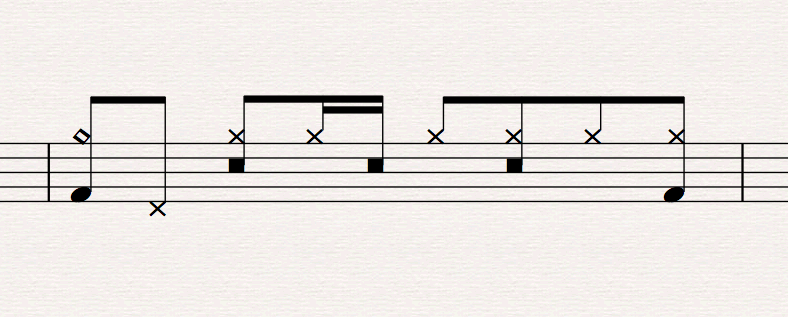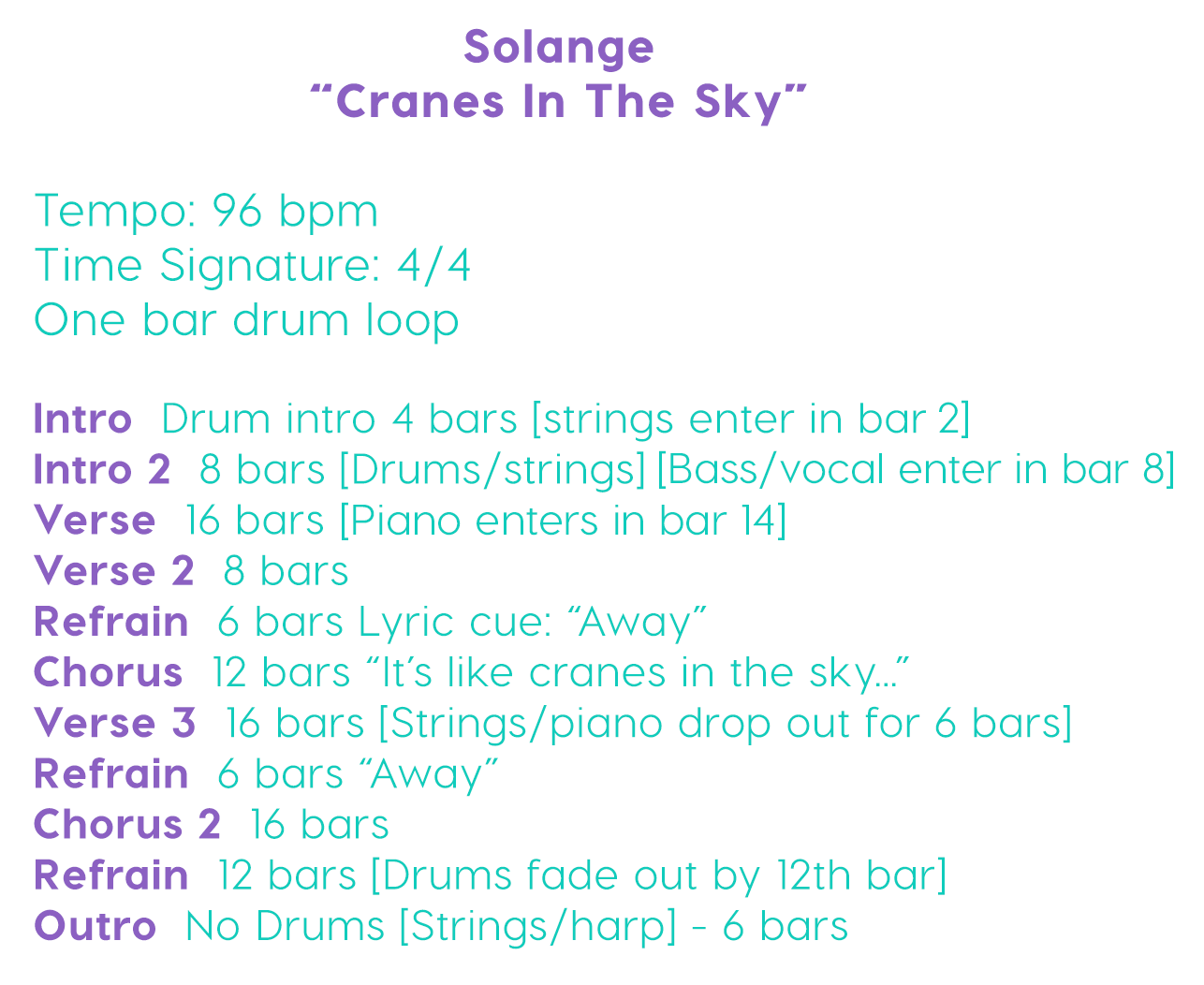+ Learn to craft more compelling beats and warped, broken rhythms with Son Lux’s Ian Chang. His innovative course is out now on Soundfly.
When I first started playing drums, I had to learn how to play songs just to be able to play with my friends or at my church. Back then, my method for learning a tune was playing along from the start, stopping whenever I messed up, then restarting the tape recorder to try to get a better take.
It wasn’t until I began playing gigs, when I had to learn multiple songs quickly, that I discovered a way to memorize tunes away from my instrument, accurately enough that by the time I sat down at the drums, all I had to do was work out the details.
As a drummer, knowing and being able to internalize the tempo, form, transitions, breaks, and, most importantly, the groove of the tune is imperative. And for me, the best way to prepare all these details prior to a rehearsal, performance, or recording session is with a form chart.

A form chart essentially outlines each part of the form of a song, so that you can move through it prepared. Form charts typically include elements like the intro, interlude, verse, chorus, pre-chorus, post-chorus, bridge, outro, vamp, solo, breakdown, ending, and cues of a tune. More specifically, it outlines the number of bars in each section, notes about groove changes, and hits, in a concise manner. A drummer should develop their own standards and symbols for their charts since, most of the time, it’s you who will be reading it! But there is a set standard for writing various types of hits in musical notation.
Let’s listen to Solange‘s new track “Cranes in the Sky” and see if you can draft a form chart to help you understand it.
Transcribing the Groove
There’s so much that goes into a form chart, so feel free to share your chart in the comments below.
A small but very significant part — in fact, probably the first thing you should do — is to figure out the groove. Here’s how I transcribed the rhythm groove in “Cranes in the Sky.”

Being able to transcribe the groove of the tune is very helpful, but there’s another way you can set yourself up for fluid site-reading and performance. Writing shorthand explanations of the groove to give you a sense of the feel of the piece can be just as helpful. An example of some quick references that I’ve personally used include, “4 on the floor,” “16th note hi-hat groove,” “Billie Jean groove,” “Half-time shuffle,” and “[insert drummer name]’s signature groove.”
Okay, back to Solange.
+ Read more on Flypaper: “4 Tips for DIY Drum Recording”
A Simple Form Chart
I whipped up a quick form chart for “Cranes in the Sky,” incorporating all of the elements relating to the performance of this piece that I’d need to know going into it. The phrasing of the bass, strings and piano are all in 3-bar phrases against the one bar drum groove, so our form chart could look something like this:

The process of creating this form chart comes from listening to the tune, away from my instrument, while counting the bars in each section and making notes of any hits, breaks, dynamic changes, or groove changes that were contained in each section. On the second listen to the tune, I made sure that all of the rhythms of the hits were in the correct places, and that I had not missed any variations between Verse 1 and Verse 2, Chorus 1 and Chorus 2, etc. On third listen, I kept time with the track and clapped through all of the breaks and hits and paid close attention to the order of events in the tune, making sure I could anticipate what was coming next.
I find I often forget to pay attention to the intro and ending when writing my chart, so I usually go back and make sure I have clear idea of who starts it off, how it starts, and how the song ends.
After finishing the form chart, I go to the drums and make sure I can play the correct tempo with the right feel, and I that have appropriate the drum sounds for the track. In the past, I would try to sort these technical details out while simultaneously trying to learn the form of the song, which is something I do not recommend. Take it step by step, learning a bit more each time around. Focusing on the form, separate from the technical aspects of playing the tune, allows you to have the confidence that you know the song all the way through, before you bring in new elements to listen for.
Slightly More In-Depth Form Charts
Many drummers need to see a score to learn a song, and that may not always be available. Given that charts are largely visual ways of interacting with music, let’s take a look at a musician creating a form chart that is organized more like a musical score. In this handy instruction, drummer Ryan Fowler uses the example of a pop country song.
Using a form chart will hopefully speed up your process of learning tunes and recognizing grooves and genres. Form sheets will speed up how quickly you the form of a song, which will give you time to focus on your tone and feel.
If you’re worried that writing a form chart sounds like more work than learning by ear — it actually still counts as learning by ear. The only difference is you’re writing down what you hear in a clear format, so that you can come back and reference it for your next performance. Which is optimal because keeping the gig is the ultimate goal!
Keep on Grooving…
Continue your learning with hundreds of lessons on songwriting, mixing, recording and production, composing, beat making, and more on Soundfly, with artist-led courses by Kimbra, Com Truise, Jlin, Kiefer, RJD2, and our new The Pocket Queen: Moving at Your Own Tempo.




